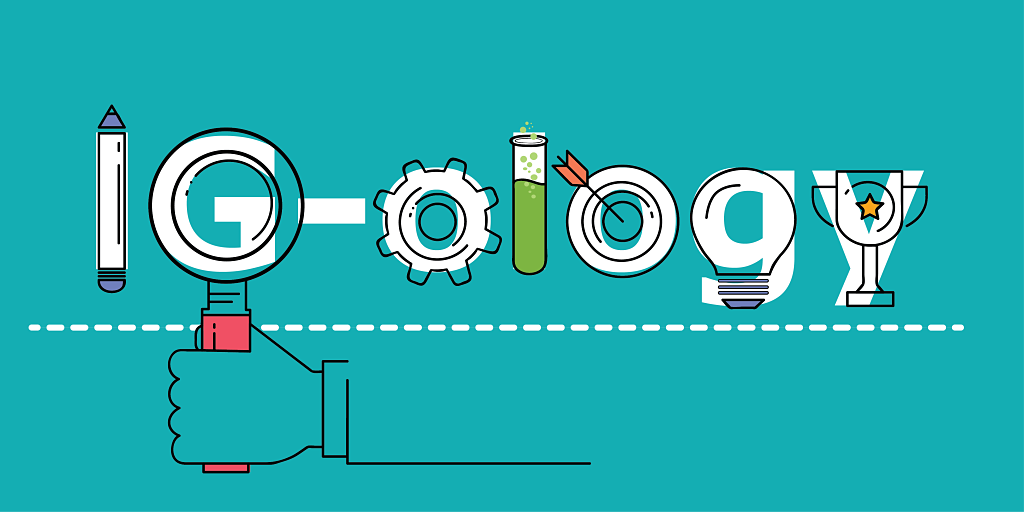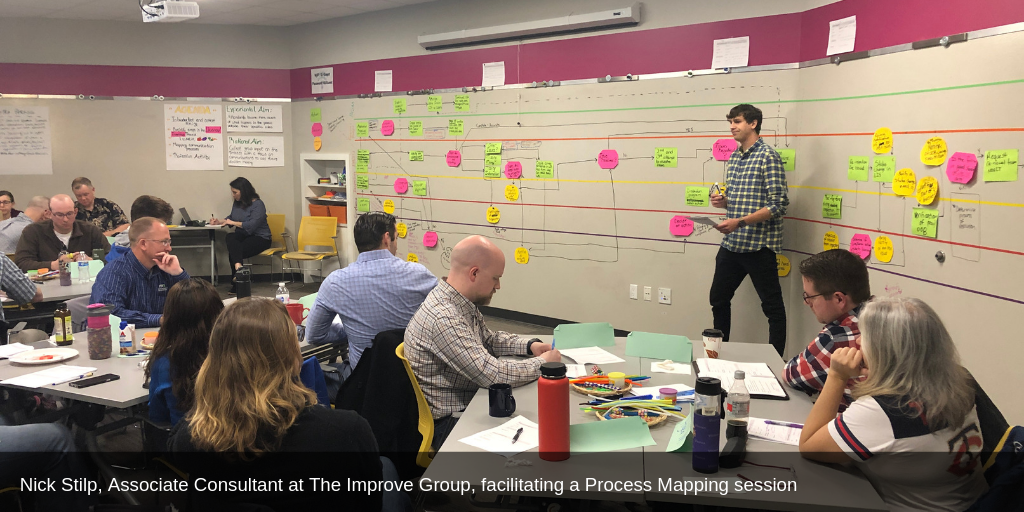
 Hi, I’m Nick Stilp, an Associate Consultant here at The Improve Group and I’m thrilled to tell you about process mapping for this month’s IG-ology. Before we dive into the value and benefits, let’s first get a better understanding of what exactly process mapping is. Process mapping visually demonstrates all the steps and decisions in a particular process. It describes the flow of materials and information, displays the tasks associated with each step, shows the decisions that need to be made along the way, and illustrates the essential relationships between process steps and the people involved. We often use process mapping to better understand certain processes and to identify areas for improvement.
Hi, I’m Nick Stilp, an Associate Consultant here at The Improve Group and I’m thrilled to tell you about process mapping for this month’s IG-ology. Before we dive into the value and benefits, let’s first get a better understanding of what exactly process mapping is. Process mapping visually demonstrates all the steps and decisions in a particular process. It describes the flow of materials and information, displays the tasks associated with each step, shows the decisions that need to be made along the way, and illustrates the essential relationships between process steps and the people involved. We often use process mapping to better understand certain processes and to identify areas for improvement.
Ultimately, process mapping will look differently depending on the specific process of focus and the unique needs of the client. For example, we worked with the Minnesota Department of Agriculture (MDA) on four separate process maps for the agency’s work on emergency responses, licensing, and food and feed safety inspections. Rather than focusing solely on technical process improvements, MDA wanted to focus on communication since there are so many different roles and departments involved in carrying out this work. Therefore, we designed the workshops to not only map out these processes, but also to dive deeply into communication points to create more awareness and better understand where communication gaps are creating inefficiencies.
Like I said, process mapping depends on a client’s context. With another process mapping project, we supported staff of The Saint Paul Foundation to increase efficiencies within one of their grantmaking processes. In this workshop, our clients wanted to leverage the expertise of the team members since it was rare for all the different perspectives to be in the same room. With this in mind, we added a consensus workshop to the agenda to generate innovative solutions to barriers identified in the process map, which elicited concrete next steps and an improvement plan.

For any type of process mapping workshop, I’ve learned some keys to success:
- The 80 percent rule. It’s important to focus on mapping out what happens about 80 percent of the time. There are always idiosyncrasies and exceptions that occur within a process, but it’s crucial to stay at a high level and map out what happens the majority of the time. This will help you stay away from unproductive rabbit holes and “what if” scenarios.
- Generate a pre-populated map. It’s a lot of work to start from scratch with so many perspectives in the room. Pre-workshop interviews can help you develop a skeleton map that displays the start and end points along with some major steps that occur in between.
- Be thoughtful about materials. Be deliberate about using different shapes and colors for different process components such as actions steps, communication points, and decisions. These small details make a big difference when it comes to comprehension, engagement, and the highly visual final product—see an example in the photo above!
The moral of the story is that process mapping can be used in a wide variety of contexts for a limitless number of processes since there is so much adaptability in how the workshops are designed. Whether your organization has a goal of improving efficiency, developing innovative process steps, or creating more awareness among siloed departments and roles, process mapping might be the tool for you!
